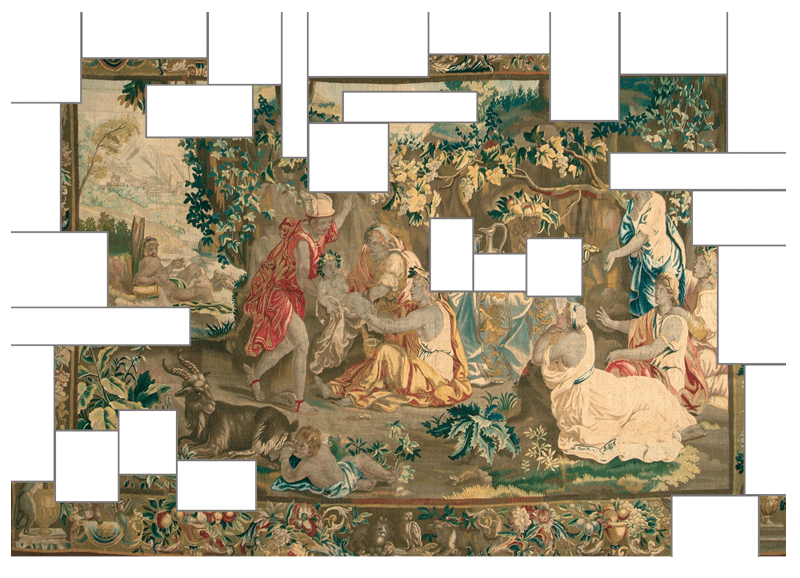
CONTEMPORARY PARAPHRASES OF AN EIGHTEENTH-CENTURY BRUSSEL'S TAPESTRY
A creative process based on known European tapestry artists, this project was launched by the Budapest-based Ildikó Dobrányi Foundation in conjunction with the Hungarian Cultural Institute in Brussels. As a result of it, the work Web of Europe, an unusual, jointly woven tapestry from the twentieth-first century, has been made for the period of Hungary’s presidency of the European Union, namely for the first six months of 2011. The work will be on display to the general public at the Musées Royaux d’Art et d’Histoire in Brussels from 20 May until 14 August 2011 and later on, in the autumn of 2011, at the Museum of Applied Arts in Budapest. It has never been a secret that the intention of this initiative is to direct attention, on a European scale, to the art of woven tapestry, which is not simply a part of our common European heritage meriting esteem and preservation, but also, simultaneously, a living, inspirational cultural medium, an exciting genre of contemporary art capable of ongoing renewal.
The basis for this collective composition was the seventeenth-century Brussels tapestry Mercury Hands Over the Infant Bacchus to the Nymphs, which is kept at the Museum of Applied Arts in Budapest. In the company of other tapestries from the same era, this piece featured at the highly successful ‘Kárpít2’ exhibition held at the Budapest Museum of Fine Arts in 2005, creating together with these works an illuminating environment for international creations from the present day.
Twenty-seven artists were asked by us to re-interpret and re-weave twenty-seven small parts cut out virtually from this tapestry, whose mythological theme was taken from Ovid’s Metamorphoses. (…) The participants were as follows (in alphabetical order): Maria Almanza (Belgium), Wanda Balogh (Hungary), Anet Brusgaard (Denmark ), Nora Chalmet (Belgium), Paola Cicuttini (Belgium), Gabriela Cristu Sgarbura (Romania), Muriel Crochet (France), Thomas Cronenberg (Germany), Adél Czeglédi (Hungary), Włodzimierz Czygan (Poland), Emese Csókás (Hungary), Ariadna Donner (Finland), Emöke (France), Martine Ghuys (Belgium), Peter Horn (Germany), Anne Jackson (Great Britain), Feliksas Jakubauskas (Lithuania), Aino Kajaniemi (Finland), Ieva Krumina (Latvia), Maria Kirkova Tzanova (Bulgaria), Federica Luzzi (Italy), Andrea Milde (Spain), Susan Mowatt (Great Britain), Judit Nagy (Hungary), Sarah Perret (France), Renata Rozsivalova (Czech Republic), and Gizella Solti (Hungary). (Katalin Schulcz: Web of Europe. In: Ibolya Hegyi, Katalin Schulcz (ed.): Web of Europe [catalogue], Ildikó Dobrányi Foundatiom, Museum of Applied Arts, Budapest, 2011, 25.)